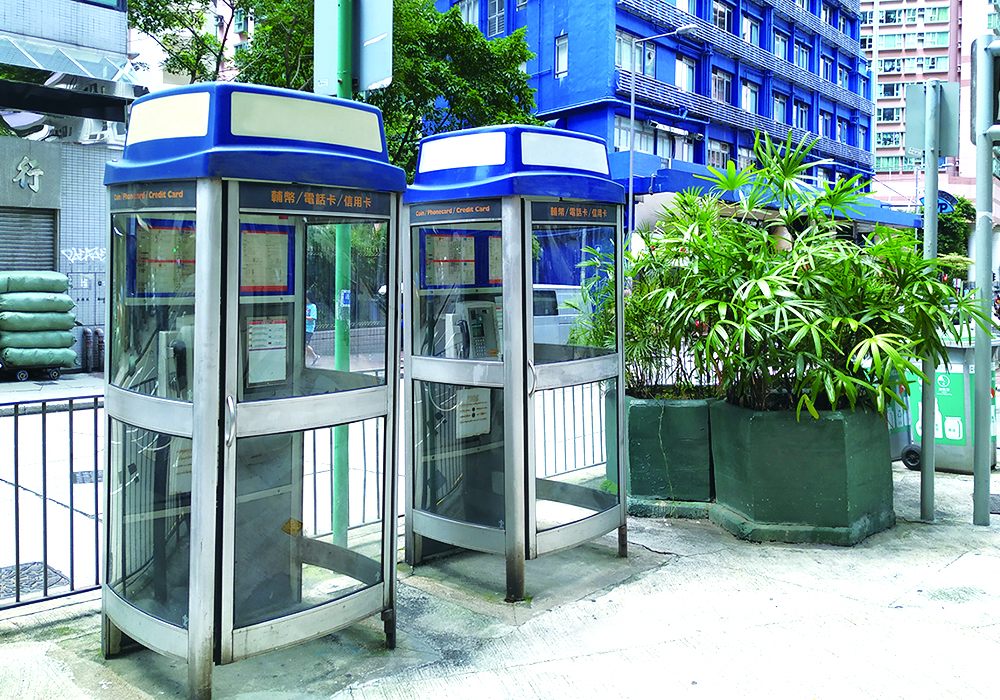Active Preparations for the 5G Era
Making 5G Spectrum Available in Multiple Frequency Bands
With the global and regional harmonisation of 5G spectrum allocations and the start of supply of commercial 5G equipment and consumer products, the market expects commercial 5G services to be available at some time in 2020. 5G services will revolutionise the mobile user experience empowered by its excellent technical capabilities for high speed, high capacity, high reliability, massive connectivity, and low latency communications. It is widely expected that 5G will open up vast potential for various commercial and smart city applications.
Between May and September 2018, OFCA assisted the CA in conducting three separate joint public consultations with SCED in relation to frequency allocation, assignment arrangements and the related spectrum utilisation fee (SUF) for the spectrum in the 3.5 GHz band, 26 GHz and 28 GHz bands, 3.3 GHz and 4.9 GHz bands. Having thoroughly considered all the views and comments received in the public consultations, SCED and the CA promulgated three joint statements on 13 December 2018 to announce their respective decisions on the frequency allocation and assignment arrangements for the spectrum in these frequency bands, as well as the related SUF.
In gist, an additional total amount of about 4 500 MHz of spectrum in multiple frequency bands has been made available starting from April 2019 for the provision of 5G services. Among the total, 4 100 MHz of spectrum in the 26 GHz and 28 GHz bands are put to the market by way of administrative assignment in view of the ample supply of spectrum in the high frequency bands. 380 MHz of spectrum in the 3.3 GHz, 3.5 GHz and 4.9 GHz bands will be assigned by way of auction in the last quarter of 2019 as there are likely to be competing demands.
Re-allocation of the 3.5 GHz Band
At present, the 3.5 GHz band is being used for fixed satellite services. The CA has decided to re-allocate the band to mobile services starting from April 2020. As set out in the CA Statement issued on 28 March 2018, to enable the co-existence of the existing satellite stations and future mobile stations operating in the same and adjacent bands, relevant mitigating measures should be adopted before the effective date of the re-allocation.
Among others, restriction zones will be set up around the existing satellite earth stations for telemetry, tracking and control of the licensed satellites in orbit (TT&C stations). To address the concern raised by the mobile industry on the restriction zones, OFCA established a working group in June 2018 under its Radio Spectrum and Technical Standards Advisory Committee to study technical arrangements for the deployment of radio base stations operating in the 3.5 GHz band within the restriction zones. The working group comprises relevant stakeholders including representatives of mobile network operators, operators of the TT&C stations, Hong Kong Science and Technology Park, and Hong Kong Applied Science and Technology Research Institute. The working group explored different mitigating measures and conducted field trials to verify the feasibility of such measures to allow controlled co-existence of the TT&C stations and radio base stations inside the restriction zones. The CA endorsed a report submitted by the working group with recommended guidelines on the implementation of mitigating measures for CA's consideration in June 2019. Relevant information and requirements have been included in the Information Memorandum for the auction of the spectrum in the 3.5 GHz band.
Assignment of the Spectrum in 26 GHz and 28 GHz Bands
Among the 4 100 MHz of spectrum in the 26 GHz and 28 GHz bands, 3 700 MHz of spectrum has been set aside as non-shared spectrum for the provision of large scale public mobile services. OFCA invited applications for administrative spectrum assignment in the two bands in December 2018, and a total of three applications from incumbent MNOs were received. In March 2019, OFCA decided to offer the assignment of 400 MHz of spectrum to each of the three applicants as per their applications. A Unified Carrier Licence (UCL) was granted to each of them in April 2019 to effect the assignment of spectrum for the provision of large scale 5G services.
400 MHz of spectrum in the 26 GHz and 28 GHz bands is set aside and will be assigned on a geographically shared basis for providing localised wireless broadband services in different specified locations such as university campuses, industrial estates, the airport and technology parks, etc. Such a sharing arrangement will facilitate the development of innovative 5G and smart city applications.
600 MHz and 700 MHz Bands
The CA plans to make available a maximum of 160 MHz of spectrum in the 600 MHz (617 – 698 MHz) and 700 MHz (703 – 803 MHz) bands after ASO for the provision of indoor public mobile services within 2021, including 20 MHz spectrum in the 700 MHz band for outdoor use. More spectrum in the 700 MHz band may be used for outdoor use by 5G services upon further coordination with the Mainland authorities.
New Frequency Bands for 5G
OFCA will continue its efforts in identifying more spectrum to support the development of 5G services in Hong Kong. In particular, OFCA will keep in view the outcome of the World Radiocommunication Conference to be convened in end 2019 on, among others, identification of frequency bands between 24.25 GHz and 86 GHz for 5G services. Subject to market demand, the CA will then consider making available this newly identified spectrum to the industry.
Facilitating the Industry to Conduct Trials for 5G Technologies and Applications
To better prepare for the launch of 5G services, as of 31 March 2019, the CA had issued a total of 25 trial permits to mobile network operators and equipment vendors with temporary, free-of-charge spectrum assignment for test purposes. OFCA welcomes applications from other interested parties for conducting further 5G trials.
Facilitating the Rollout of 5G Networks
For deployment of 5G services in Hong Kong, mobile network operators will need to establish a larger number of radio base stations as compared with previous generations of mobile services. To facilitate the expedient and effective rollout of 5G networks, OFCA has since March 2019 launched a pilot scheme to open up more than 1 000 suitable government premises for mobile network operators to install radio base stations with a streamlined approval process. OFCA has set up a dedicated team to coordinate with mobile network operators and relevant government departments on the matters concerned, and issued the "Guidance Notes for Submission of Applications under the Pilot Scheme for Installation of Radio Base Stations at Selected Government Venues" to set out the principles, requirements and streamlined procedures in respect of the applications under the scheme. The scheme has been well received by the industry. By the end of June 2019, mobile network operators had selected about 293 and 672 government premises for installation of radio base stations by end 2019 and 2020 respectively. OFCA will review the scheme in late 2019 in the light of experience gained with a view to extending the scheme to other suitable government premises.
OFCA has also been working closely with the industry to identify suitable street level furniture and facilities for the installation of radio base stations, such as at public payphone kiosks, bus passenger shelters etc., and is coordinating with relevant government departments to facilitate the conduct of technical trials, formulation of relevant procedures and sorting out of approval requirements for use of these street furniture and facilities to install radio base stations.
Facilitating Development of Wireless Internet of Things Services
Internet of Things is an emerging technology that enables the provision of communications platforms and services for interconnected devices to generate, exchange and consume data with minimal human intervention. Since the creation of a new licensing regime for the provision of Wireless Internet of Things (WIoT) platforms and services using the shared frequency band of 920 – 925 MHz by the CA in December 2017, three WIoT licences have been issued. On the other hand, the existing mobile network operators may also provide WIoT services by adopting mobile technology such as Narrowband Internet of Things with the use of their frequency spectrum assigned under the UCL. With the introduction of a new WIoT device fee under the UCL effective from 31 January 2019, any WIoT device operated under the UCL is subject to a much reduced level of $2 for each WIoT device, which is set at the same level as the fee under the WIoT Licence. OFCA will continue to support the CA to facilitate the development and competitive supply of WIoT services in Hong Kong.
Re-assignment of Frequency Spectrum in the 900 MHz and 1800 MHz Bands
The current assignments of 50 MHz of spectrum in the 900 MHz band and 150 MHz of spectrum in the 1800 MHz band will expire in January and September 2021 respectively. Provisional assignments of 20 MHz of spectrum have been made to each of the four incumbent spectrum assignees through the offer of a right of first refusal in September 2018. Auction for the remaining 120 MHz of spectrum was conducted in December 2018 and the spectrum was successfully auctioned off to the four incumbent spectrum assignees at a total SUF of $6 billion. Together with the SUF for the spectrum in the 1800 MHz band re-assigned administratively through the right of first refusal at $4.32 billion, the spectrum assignees are required to pay a total SUF of $10.32 billion for the new 15-year term of assignments.
To ensure a seamless transition when the spectrum is changed over in 2021, OFCA convened a technical working group in May 2019 comprising representatives of all the incumbent and new spectrum assignees, to coordinate the relevant technical arrangements to reconfigure their existing networks and/or roll out additional network infrastructures.
Review of the Telecommunications Regulatory Framework by the Government
In 2018/19, OFCA provided support in the review of the telecommunications regulatory framework under the TO, which was conducted by CEDB with a view to embracing the arrival of 5G and Internet of Things technologies and facilitating the trade. OFCA will continue to provide necessary support to the CA in relation to the review of the telecommunications regulatory framework conducted by the CEDB and any future legislative amendments to the TO having regard to stakeholders’ views received in the exercise. In parallel, OFCA will provide support to the CA in respect of the introduction of various streamlined administrative measures with the aim of further facilitating the operation of the industry.
Review of the Class License Regime for Offer of Telecommunications Services
CLOTS created by the CA pursuant to section 8(1)(aa) of the TO authorises any person meeting the criteria or conditions set out therein to offer any telecommunications services to the general public without establishment, operation or maintenance of any means of telecommunications. In view of the emergence of new technologies and the adoption of new business models and commercial practices by market players, OFCA assisted the CA in conducting a public consultation in January 2019 so as to solicit views and comments from the public on its proposals to update the relevant conditions of the CLOTS, including the introduction of a registration requirement for CLOTS licensees serving a large customer base. Taking into account views and comments received therein, the CA issued a statement on 26 April 2019 to promulgate its decision to vary the conditions in the CLOTS with a view to enhancing regulatory oversight and providing better consumer protection.
To allow existing CLOTS licensees sufficient time to make necessary adjustments to their business systems and procedures for compliance, the revised CLOTS will take effect from 26 October 2019, while the newly introduced registration requirement will further be subject to a three-month grace period after the effective date, i.e. by 26 January 2020.
Reduction of Telecommunications Licence Fees
OFCA supported the CA in preparing a joint public consultation with the SCED on proposals to reduce the licence fees for five types of licences issued under the TO and to introduce a new fee component for WIoT under the UCL to facilitate the development of WIoT services. The consultation was conducted from June to August 2018.
Having carefully considered the views and comments received during the consultation exercise, the CA and SCED jointly promulgated their decisions in October 2018 to proceed with the fees reduction proposals and introduction of the WIoT fee component under the UCL. Customer connection fee under UCLs is reduced from $700 to $500 for each 100 customer connections; and mobile station fee of public radiocommunications service licences for public radio paging services and services-based operator licences (Class 3) (mobile virtual network operators) is reduced from $700 to $500 for each set of 100 mobile stations. For mobile radio system mobile station licences and private mobile radio system licences, the licence fee for each mobile station is reduced from $270 to $220.
Following the enactment of the Telecommunications (Carrier Licences) (Amendment) Regulation 2018, the new licence fees became effective on 31 January 2019.
Review of the Number of Public Payphones under the Universal Service Obligation
Public payphone is a form of basic telephone service which the universal service provider is required under its USO to provide. The cost of providing a public payphone service subject to the USO is shared by the fixed and mobile services operators. In view of the diminishing demand for public payphone service in recent years, the CA announced on 29 June 2017 that a review would be conducted to determine the reasonable number of public payphones that should be subject to the USO.
OFCA has since conducted the review in accordance with the guiding principles laid down by the CA. For in-building type public payphones, consultations with the owners/managers of the sites were completed in February 2018. Based on the feedback from the owners/managers of the sites, OFCA decided to exclude about 35% (515) of the in-building type public payphones from the USO. For kiosk type public payphones, consultations with all 18 District Councils were completed in March 2019. Based on the feedback of the District Councils, OFCA decided to exclude about 50% (765) of the kiosk type public payphones from the USO.
Implementation of the Subsidy Scheme to Extend Fibre-based Networks to Villages in Remote Areas
To speed up the progress of extending network coverage by telecommunications companies in remote areas in Hong Kong, the Chief Executive announced in the 2017 Policy Address that the Government would provide subsidies to telecommunications operators to encourage the extension of fibre-based networks to villages in remote areas (Subsidy Scheme). OFCA has been tasked to implement the Subsidy Scheme.
The Subsidy Scheme covers 235 villages across nine districts in the New Territories and outlying islands, which are located far away from the existing fibre-based backbone networks of fixed network operators, where villagers can only choose broadband services delivered over copper-based networks at a speed of 10 Mbps or below.
A funding of $774.4 million has been approved by the Finance Committee of the Legislative Council for the implementation of the Subsidy Scheme. OFCA is conducting a tender exercise for selection of fixed network operators to participate in the Subsidy Scheme. Selected fixed network operators will be subsidised to roll out lead-in connections to the vicinity of the entrances of the villages concerned. Depending on the works progress and views of the villagers, it is expected that the subsidised lead-in connections can be extended to the villages concerned by phases from 2021 onwards.
Development of Fixed Broadband Services
With the continuous network rollout of fixed network operators, the Hong Kong community is able to enjoy nearly ubiquitous coverage of broadband networks deploying various technologies. As of March 2019 there were around 2.71 million residential and commercial fixed-broadband subscriptions, with a household penetration rate of 93%. Broadband services are now available at speeds of up to 10 Gbps. Around 80% of the fixed broadband subscriptions are supported by broadband services with speeds of 100 Mbps or above.
According to a report issued by the Fibre to the Home Council Europe in March 2019, Hong Kong ranked the sixth worldwide in fibre to home/building household penetration among the 64 economies under comparison.
Landing of New Submarine Cable Systems in Hong Kong
With the support of OFCA’s single-point-of-contact service, five regional and transcontinental systems (namely, Pacific Light Cable Network, Hong Kong-Guam Cable System, Hong Kong-Americas Cable System, South East Asia-Japan 2 Cable System and Bay to Bay Express Cable System), as well as two domestic systems, (namely, Ultra Express Link and TKO Connect) are being constructed and planned for putting into service between 2019 and 2021. OFCA will continue to assist operators in applying for the necessary statutory approvals for construction of new submarine cable systems in Hong Kong.
Development of Hong Kong's Satellite Networks
Satellite spectrum and orbital positions are scarce natural resources. Use of these resources by communications satellites registered in Hong Kong should also comply with the coordination and notification requirements of the ITU. In this regard, OFCA supports the licensed satellite operators of Hong Kong to attend satellite network coordination meetings with foreign administrations from time to time, and assists in the processing of licences for the launching and operation of satellites in space orbits. In 2018/19, OFCA participated in four satellite network coordination meetings with the administrations of Norway, the United States of America, Japan and the United Arab Emirates respectively. Following the launch of the new satellite APSTAR 6C in 2018, there are now 12 satellites in orbit operated by two Hong Kong companies licensed to provide satellite communications services.
Setting and Enforcing Telecommunications Standards
OFCA closely monitors international developments in telecommunications standardisation, and updates local technical standards in order to meet the needs of the industry and the public. In 2018/19, one new and one revised technical standard were approved and issued by the CA after consulting the Radio Spectrum and Technical Standards Advisory Committee.
Qualified local and overseas testing laboratories are now providing testing and certification services for telecommunications equipment against technical standards prescribed by the CA. In particular, local laboratories accredited by the CA as local certification bodies (LCBs) can offer a full range of telecommunications equipment testing and certification services. In 2018/19, LCBs and foreign certification bodies issued 550 equipment certificates to meet the needs of the telecommunications equipment market.
To ensure that all LCBs providing telecommunications equipment testing and certification services meet the service quality and performance standards required by OFCA, OFCA will continue to closely monitor their performance by conducting documentary checks, plant visits and reviews on a regular basis. So far, all LCBs have been performing up to the requirements set by OFCA.





